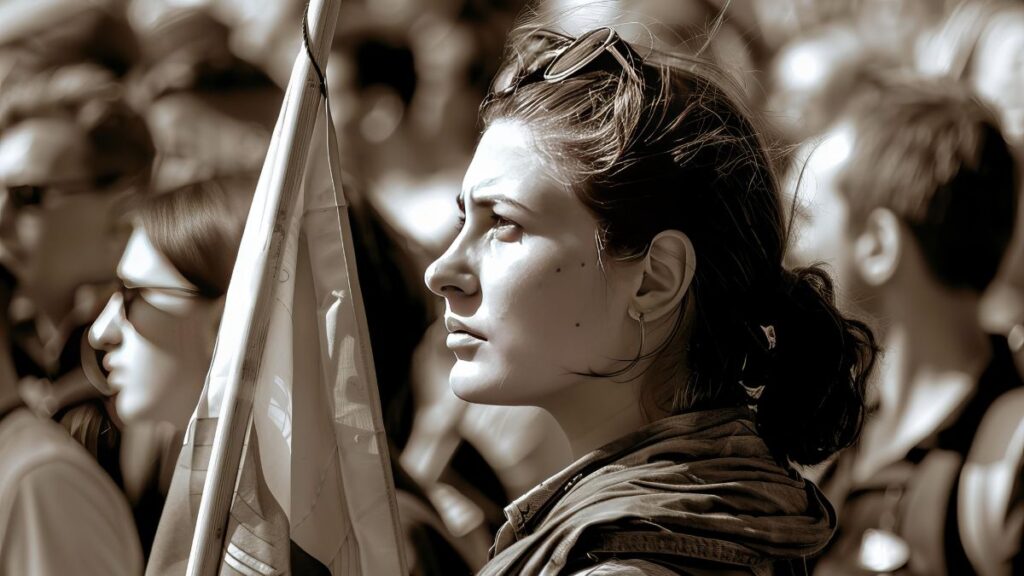fascisterne – Unpacking the History and Modern Influence of Fascist Ideology
The term fascisterne, a Danish word meaning “the fascists,” holds a complex and heavy historical weight. It refers not just to members of past fascist regimes, but also to a broader ideology that has influenced political structures, cultural movements, and modern extremism across decades. Although primarily associated with the 20th century, the term still echoes in today’s sociopolitical discourse, especially as some ideologies resurface in different forms.
To understand the full scope of fascisterne, it’s essential to trace their ideological origins, examine the global consequences of fascist regimes, and explore how this concept persists in present-day rhetoric and politics.
Origins of fascisterne
The term “fascism” originates from the Latin fasces, a bundle of rods symbolizing strength through unity. In the early 20th century, Italian dictator Benito Mussolini adopted the term to define his authoritarian movement. Consequently, fascisterne came to refer to individuals who supported, promoted, or implemented fascist principles, particularly in Europe.
In Denmark and other European countries, fascisterne were often associated with extreme nationalism, militarism, and loyalty to dictatorial leaders. They also rejected democratic values and championed rigid control over society, including suppression of dissent and centralized economic planning.
Key Characteristics of fascisterne Ideology
Although fascist movements varied by country, several core traits consistently appeared across them. For one, fascisterne prioritized nationalism over individual rights. They sought to unify people under a single national identity, often by excluding or vilifying minorities.
Another defining feature was the glorification of authoritarian rule. Fascisterne typically rallied behind a charismatic leader who promised to restore national pride and order. Additionally, they viewed political opposition not just as disagreement, but as a threat to the nation’s stability—something that had to be silenced.
Economically, fascist governments often controlled key industries to align with national goals, though they stopped short of full socialism. Militarism and a willingness to use violence were also central tools for maintaining control and spreading ideology.
Historical Impact of fascisterne
Fascisterne left a devastating mark on global history. Mussolini’s regime in Italy and Adolf Hitler’s Nazi regime in Germany led to unparalleled human suffering, including genocide, war, and the destruction of democratic institutions. These regimes relied on widespread propaganda, suppression of civil liberties, and systemic violence to achieve their objectives.
In Spain, General Francisco Franco led a fascist-aligned dictatorship after a brutal civil war. Although his regime differed slightly in form, it shared many authoritarian characteristics with other fascist governments.
The global response to fascisterne culminated in World War II and, ultimately, the military defeat of fascist powers. However, the long-term consequences were profound—millions of lives lost, the Holocaust, and a global reckoning with the dangers of unchecked authoritarianism.
Resurgence in the Modern Era
While traditional fascist regimes collapsed by the mid-20th century, the ideology behind fascisterne never fully disappeared. Instead, it evolved. Today, far-right movements around the world sometimes echo fascist rhetoric—emphasizing xenophobia, ultra-nationalism, and disdain for democratic norms—even if they reject the label.
In many countries, far-right parties gain traction by framing immigrants, minorities, and political opponents as existential threats. They appeal to nostalgia, promising a return to “greatness” through strong leadership and strict national unity. Although not identical to their 20th-century counterparts, these movements reflect a disturbing continuity with fascisterne’s ideological foundation.
Recognizing the Warning Signs
Being able to identify the signs of resurgent authoritarianism is crucial. While not all nationalist movements are fascist, the overlap becomes concerning when certain patterns emerge. These include:
-
Discrediting or dismantling independent media
-
Promoting a single, “pure” national identity
-
Undermining democratic institutions and processes
-
Encouraging political violence or suppressing dissent
-
Glorifying a strong, unaccountable leader
Understanding the legacy of fascisterne equips us with the context needed to spot these warning signs early. Societies must remain vigilant, especially during periods of economic or political instability when such ideas often gain popularity.
Cultural Memory and Ongoing Reflection
Fascisterne continue to feature in public memory, academic studies, and artistic representation. Films, novels, and documentaries frequently explore this period to educate new generations. Museums and memorials across Europe work to preserve the truth about the atrocities committed under fascist regimes, ensuring that history is neither forgotten nor distorted.
Moreover, institutions and educators emphasize critical thinking and historical literacy to help individuals resist simplified or misleading narratives. By keeping the lessons of the past alive, societies can better defend themselves against future threats.
Frequently Asked Questions
What does fascisterne mean?
It is the Danish word for “the fascists,” used to refer to supporters or members of fascist political movements.
Were fascisterne only active during the 20th century?
Primarily yes, though elements of their ideology still influence modern extremist groups.
Is fascism still a threat today?
While not always labeled as such, far-right authoritarian movements continue to draw from fascist principles, making vigilance essential.
What distinguishes fascisterne from other political ideologies?
They rejected democratic processes, embraced authoritarian leadership, and used nationalism and violence to achieve societal control.
Why is it important to study fascisterne today?
History offers valuable lessons. By understanding fascism’s rise and consequences, we can better safeguard democratic values and human rights in the present.
Final Thoughts
The name fascisterne serves as both a historical label and a warning. While the regimes associated with this term may belong to the past, their ideological descendants have not vanished. Instead, they adapt to new contexts and often emerge when societies are divided or vulnerable.
By critically examining the history and ideology of fascisterne, we reinforce our commitment to democracy, pluralism, and the protection of human dignity. In doing so, we help ensure that the mistakes of history are not repeated, but instead serve as a foundation for a more just and informed future.
